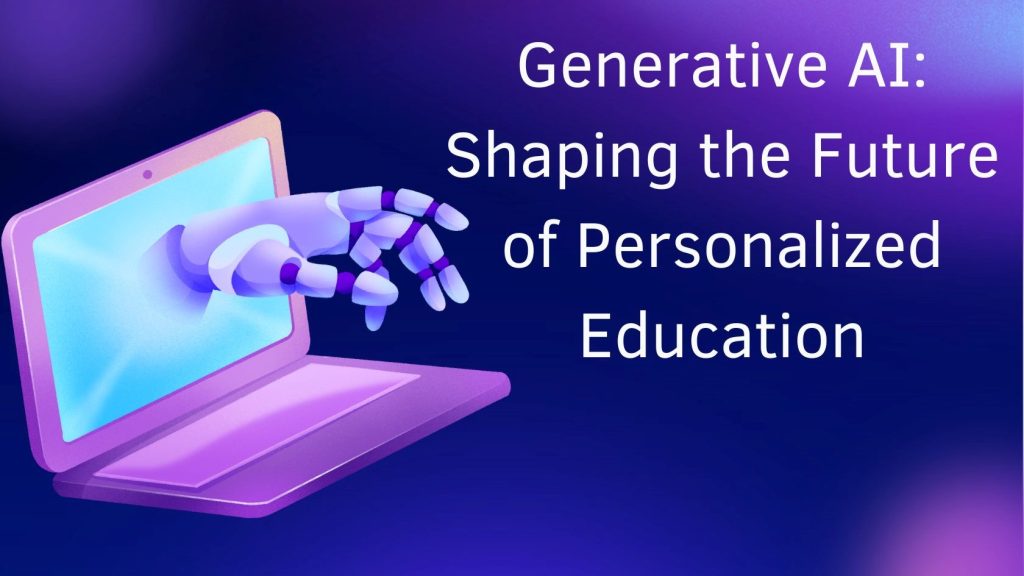A seasoned expert in generative AI, Bikramjeet Singh explores the transformative power of artificial intelligence in personalized learning. His work highlights how adaptive learning systems, real-time feedback, and predictive analytics create a responsive, student-centered educational model.
Adaptive Learning Systems: A New Paradigm
Generative AI has unlocked unprecedented potential in crafting tailored educational experiences. These systems analyze vast datasets to generate content that aligns seamlessly with individual learning styles and objectives. Unlike traditional teaching methods that offer uniformity, AI-driven content can dynamically adjust to each student’s pace and mastery. This approach promotes engagement and retention by ensuring that learners are consistently challenged within their optimal learning zone.
Dynamic Difficulty Adjustment for Optimal Engagement
One of the standout features of AI-powered learning is its ability to fine-tune content complexity in real-time. By analyzing student performance data—accuracy, response time, and error patterns—these systems adjust the difficulty of exercises to maintain an ideal balance of challenge. This ensures students remain motivated without feeling overwhelmed or disengaged. Through continuous difficulty calibration, generative AI helps learners build confidence and achieve incremental progress, setting a new standard for interactive education.
Personalized Learning Paths: From Theory to Practice
Traditional curricula often follow a rigid structure, leaving little room for customization. Generative AI, however, allows for dynamic curriculum sequencing that responds to individual progress. By assessing strengths and areas needing improvement, AI can prioritize and reorder content, ensuring students receive the support they need while advancing through familiar topics at a faster pace. This adaptive curriculum fosters deeper comprehension and encourages students to take ownership of their learning journeys.
Real-Time Feedback and Predictive Analytics
Immediate, constructive feedback is crucial for effective learning, and AI-powered systems excel at delivering timely analysis for diverse assignments—from multiple-choice tests to essays. These systems not only score work but identify areas needing improvement, fostering self-reflection and enhancing learning. Predictive analytics further aid early intervention, flagging potential academic challenges by analyzing historical and current data. This empowers teachers to provide tailored support, preempt difficulties, and keep students on track, ensuring steady progress. Through this synergy, AI supports a more personalized and proactive educational experience.
The Multifaceted Benefits of AI in Learning
AI-driven learning technologies offer numerous advantages, such as increased student engagement and improved academic outcomes. Custom content delivery tailored to students’ cognitive preferences can significantly boost retention and motivation. Generative AI supports multimodal learning, presenting content through text, audio, visuals, and interactive simulations to accommodate diverse learning styles. Another key benefit is enhanced resource efficiency; automating tasks like grading and content delivery allows educators to focus on mentoring, facilitating discussions, and addressing socio-emotional needs. This balance between AI and human interaction ensures technology enhances learning while teachers provide essential empathy and foster creativity.
Challenges and Ethical Considerations
Integrating AI into education presents challenges such as data privacy and equity. Generative AI systems require substantial student data, making strong security measures and transparent data policies crucial. The digital divide remains a barrier, as students in underserved communities may lack access to technology and stable internet connections. Addressing these issues involves investing in infrastructure, providing subsidized resources, and developing offline-capable learning tools. Additionally, teacher readiness is vital for successful adoption. Comprehensive training programs are needed to equip educators with technical skills and strategies for seamless AI integration in teaching.
The Road Ahead: AI-Human Collaboration
The future of education lies in a collaborative model where AI complements human teaching, forming a “hybrid intelligence” framework that leverages the strengths of both. AI handles routine tasks and offers data-driven insights, allowing teachers to focus on higher-order instruction, critical thinking, and emotional intelligence development. Research supports this approach, showing improved learning outcomes and teacher satisfaction. As these technologies advance, they promise to extend beyond traditional classrooms, supporting lifelong learning and ensuring skills remain relevant in a constantly changing world, balancing innovation with thoughtful, responsible implementation.
In conclusion, Bikramjeet Singh’s vision for generative AI in education highlights a balanced approach, prioritizing innovation and inclusivity. Addressing challenges like equity and data privacy while promoting collaboration between AI and educators will enable the educational ecosystem to meet diverse 21st-century learners’ needs.


